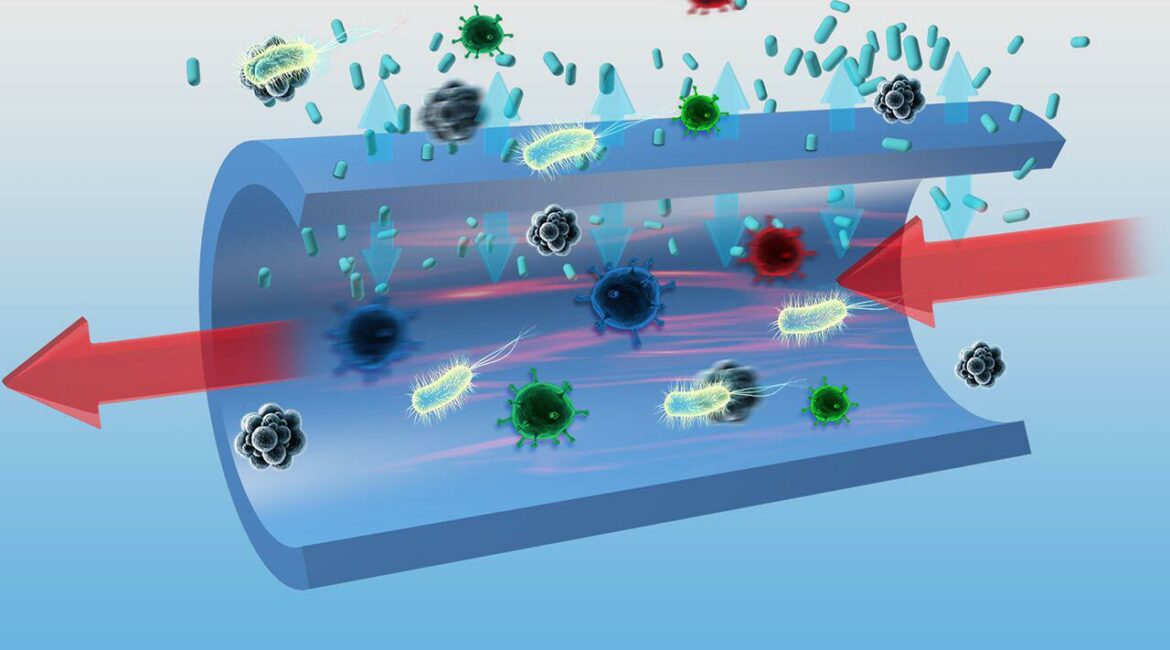Not all microbes adversely affect us, but the ones which do can cause skin allergies, redness, cough, fever, flu and even internal infections such as intestinal or urinary tract ones. They can even poison our blood leading to heart failure and are fatal. It is essential that we create a barricade between us and them for our own health. Items in our houses which are touched and used the most, although cleaned, have millions of microbes, invisible to the naked eye. Weak immunity or open wounds can create an easy path for them to enter our bodies and harm us. So, if we touch the surfaces, we carry the pathogens on our skins and if we are not careful enough, they can enter our bodies quite easily. What antimicrobial coatings do is that they resist microbes and pathogens from harming us and weaken their immunity instead of ours and also cease their growth on surfaces, leading to decolonization of such microbes.
Where can microbial activity be ceased by applying antimicrobial coatings?
- Smooth Surfaces:
These coats can be applied on a number of surfaces such as granite, wood, glass, steel, plastic, door knobs or copper or brass, air purifiers and conditioners, cell phones, kitchen and bathroom counters and cabinets, our automobiles, oven, window panes etc.
- Components or rough surfaces:
These include; ceramics, floors, walls, tiles, closets and wardrobes, décor pieces, wall hangings, mixes of concrete before using in construction, ceilings, furniture and faucets, synthetic sheets, wooden clocks and antiques etc.
- Home items:
Dining tables, pipelines, garage counters, carpets, rugs, doormats, bathroom mirrors, dressing tables and drawers, vacuum cleaners, bedding items, pillows and pillow covers, utensils, railings around stairs, garden chairs, fridge, laptops, curtains, dusting cloth, mops, car seats, steering wheel, photo frames, toilet seat, sports goods, painted walls, switch boards, door locks, etc. can also make use of such antimicrobial coatings.
The positive side of antimicrobial coatings
They are a cost saver when it comes to medical facilities and health centers. Applying these coatings on medical instruments and tools as well as the larger items there is beneficial as these stay on for years and because of inhabiting the growth of microbes, cleaning the same items again and again would not be a chore and a lot of costs for expensive cleaners for regular use can be saved and also the adverse effects of such agents on the environment can be avoided.
Since the past decade, many other advantages have been noticed by the users of these coats and are noticed to be consistent in all the cases. Some of them I have mentioned below:
- Using the antimicrobial coatings in health centers and hospitals can, apart from being cost saving, reduce the risk of infections and diseases in patients with weak WBCs and antibodies.
- They stay on the surface and are not dissolved in the form of CFCs in the environment causing any kind of harm to the atmosphere.
- The efforts and time of cleaning staff to work will be reduced and they won’t have to clean the floors and other surfaces nearly twenty times a day.
The downside of this product
Though it reduces the cleaning efforts and the excessive use of cleaning agents, it is bad news for the companies which sell those cleaning agents. The lesser their use, the lesser the purchase. This can be a hard blow on their profits and the switching can be a risk to their products sales. However, it is also proven by research that washing time and again can protect a person or a surface more than antimicrobial coatings, especially if not still cleaned regularly after the sheet of coatings has been applied and this can also double the costs for some small businesses.
There also have been reports that the ingredients of such formulas are not 100 percent safe for human health. There are some chemicals which can be harmful if applied much and also some of the researches have been unable to find a visible and noticeable difference and have recommended the washing agents because of their low costs.
What can we derive from the facts?
Though some tests might show that they do not clean more than the cleaning agents, they still give a layer on items which protect our and our children’s health. Toddlers have a habit of putting things in their mouth and if they have such coatings the material of the items will not harm them as much as they actually can. They also protect the paint to chip off and prevent fungus from growing, especially in humid conditions of rain. So, in my opinion it is best we use them and if we have access to professionals for directions, instructions and solution provisions, we should make use of them. I recently talked to an expert from Cladding Cleaning and he told me all the needed details; about how pathogens can be harmful to us and which are the most high-contact and risk areas in our houses and offices and in any place we visit and how we should be careful enough before touching such surfaces, especially if we are unsure whether they have been protected by antimicrobial coatings or not. During the ongoing pandemic, these coatings can prove their worth because those who transmit the bacteria and viruses are doing it unintentionally and the spreading capacity is increasing day by day. These can help us keep our homes safe and if anyone in our home has weak immunity, works in a hospital, has any other infection or disease will not spread it and also will be less prone to more health risks. Sometimes, going to run errands is not an option because of lockdown, or the product you trust is not on the shelf temporarily. In such cases these coatings prove to be a sigh of relief as we would not have to compensate our health with some alternative, low quality product which we do not even like but have to buy because of scarcity or unavailability.

